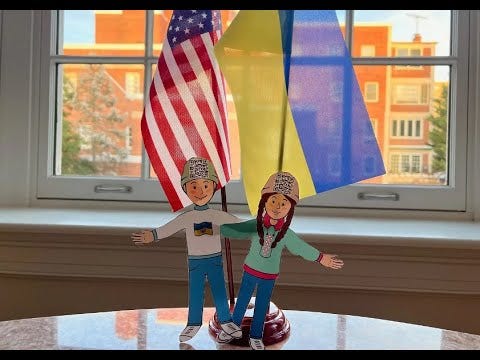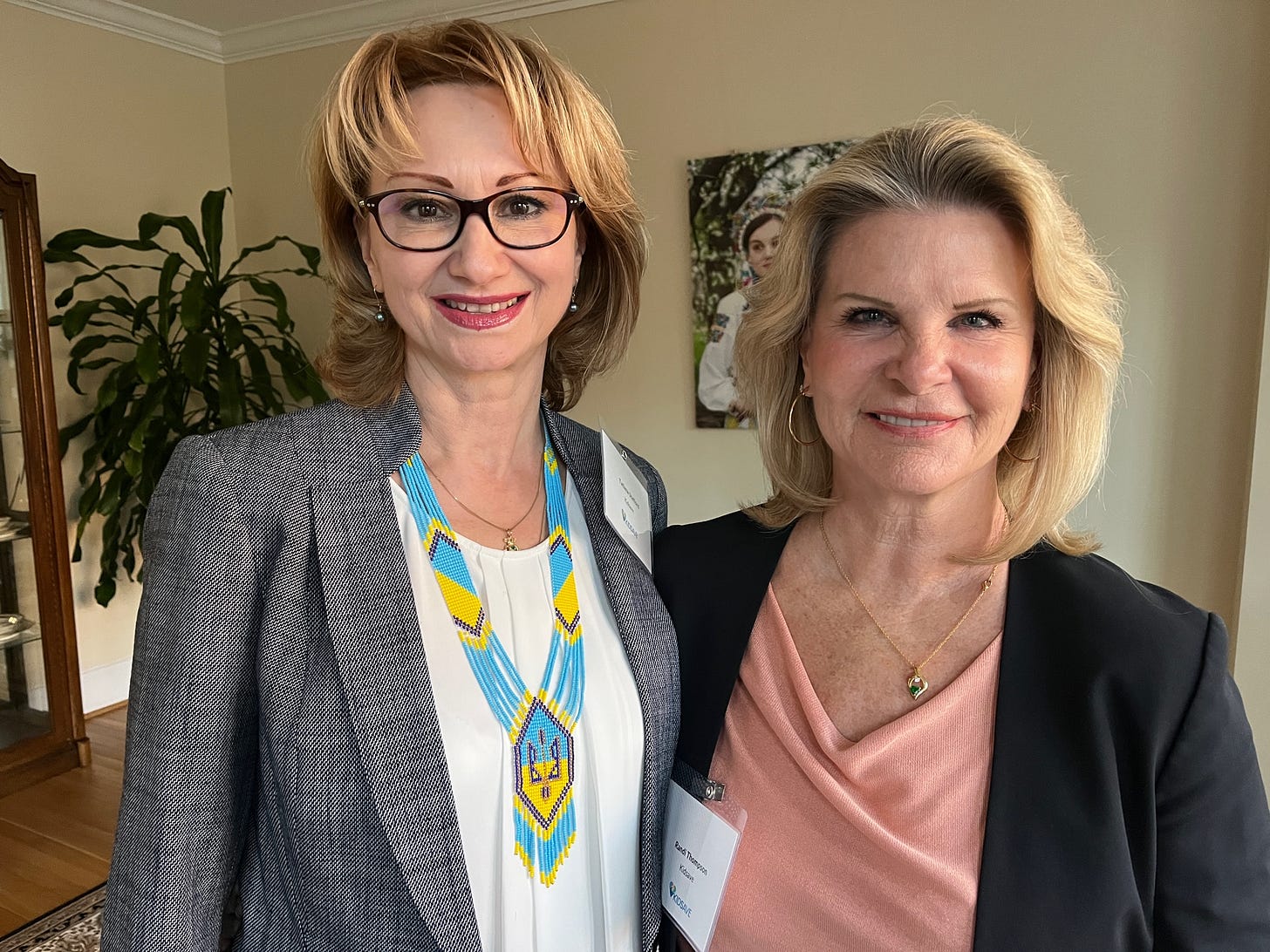VIDEO: Bringing new life to "older children" through adoption
It is the kind of work that feels like it will never be over. Still, every day is a triumph – every day is a chance to give a child the beautiful blessing of what it means to be part of a family.
"It isn't that complicated; it's not brain surgery. It's just that we take the kids that other people aren't thinking about and bring them back to a community," stresses Randi Thompson, the CEO and co-founder of Kidsave International, a child advocacy non-profit that focuses on the adoption of older children into loving families.
In many ways, there are two distinct parts to Randi's life: before and after Kazakhstan. Three decades ago, the then a marketing executive in Los Angeles visited an orphanage for children aged 7-15 in the Central Asian country and former Soviet republic on the Caspian Sea. However, she was shocked and devastated to witness such squalid conditions of children wasted to the bone, and teens forced to move out with no place to go, no vocational skills and little hope for a better life.
"They (the children) were just being warehoused, and you could see in their eyes that they were just so helpless. I couldn't get them off my mind," Randi tells me. "We found lots of people were giving money to build orphanages and sending clothes over. But we wanted to see how to help them get out, and we found nobody really focused on older children."
The memories haunted her deeply, leading to sleepless nights. Thus, she and co-founder Terry Baugh – both already adoptive mothers themselves – decided to do something about it. Kidsave was born in 1997.
According to UNICEF, more than 120,000 children in the United States are waiting to be adopted at any given moment, and a further two million children are eligible for adoption globally.
One out of every 50 American children is adopted, or about two percent. While statistics vary, the U.S. Adoption Network notes 38 percent of domestic adoptions are private, 37 percent stem from the child welfare (or foster) system, and 25 percent are international, typically through agencies and other global providers. Moreover, an estimated 1.3 million abortions happen annually, with only four percent of unwanted pregnancies putting the infant up for adoption.
Despite this, Kidsave stands out in its vision to ensure that every child can grow up in a stable and attentive environment, focusing on ensuring that older children in foster care and orphanages are not forgotten.
A child is most likely to be adopted during the first nine years of life. Their chances of being adopted wane dramatically after their tenth birthday, when they are characterized as an "older child." However, as Randi also points out, the definition of an "older child" varies from country to country. For example, Kidsave works with children aged nine to eighteen in the U.S. In other countries, the classification could be as young as two, or commonly it is six and up.
Part of the hard work is to educate the public and make communities aware of the incredible number of older children looking to belong to a nurturing family. In my research, I encountered several myths that impede older adoptions. These range from fear of not building a connection and missing milestones to concern that older children in the system "are damaged", as well as the classic preference for a "cute baby."
In the United States, there is no cost for families to adopt children from foster care; however, the most common challenge is finding the right match. Moreover, the U.S. only terminates parental rights once an adoptive family is identified, which also elongates the process.
So, how do we treat the strangers in our towns? The children seeking homes are not even strangers – individuals among us who we have known almost all our lives. And to further pauperize these persistent misnomers, Randi and the Kidsave team routinely hold "Weekend Miracle" picnic events in various states and communities, introducing children to curious families in a casual and fun-spirited environment.
"Often by the time kids are older, they have been (in the system) for a while and have these rap sheets, which doesn't look good on paper. But they have been in care, and they have been traumatized for a while. But once people meet the kids, they can see the child is no longer just a case history. Then they become a real person," Randi explains. "In addition, the older kids are afraid to trust. They have been through so many broken attachments and have had so much disappointment. So, we get people to meet them and spend time with them on their terms."
Beyond the United States, Kidsave programs operate in Colombia, Sierra Leone and Ukraine. The latter has been a massive undertaking since Russia launched a full-scale invasion in the brittle early hours of February 24, 2022.
Since the outbreak of war, the Kidsave priority has expanded beyond training, mentoring, and helping place older Ukrainian children with families into life-saving evacuation and rescue. The team, spearheaded by Tatiana Stafford – Vice President and Director for Eastern Europe – was merely three people before the invasion, but now consists of more than three hundred dedicated volunteers dubbed "Angels of Hope" and over sixty vehicles.
For the past twelve months, Angels drive orphans and foster families to safer zones along bomb-blitzed roads in the dead of night. But despite the chaos, many have found homes in the midst of conflict.
"Amazingly, we placed twenty-four children last year into local families," Randi enthuses.
Nevertheless, if life was tough for these children before the war, it is bound to be even more challenging now – marred by mangled kitchen tables and overgrown fields. Yet much like Ukraine's admirable fight against a much larger and more equipped aggressive neighbor, children in the Kidsave program embody everything it means to be resilient.
And in addition to their social media #FlatSasha project – a friendly play on the 1960's-launched "Flat Stanley" book series by the late Jeff Brown, Kidsave in Ukraine is now focused on building a large group home in the mountains on a serene piece of property gifted to the organization last year.
Life does return even in the middle of a painstaking war, and the idea is for the Kidsave abode to be a joyful and educational home environment with trauma therapy, mentoring, and space for families and children in need to meet, without the connotations that come from archaic descriptions of an orphanage.
And perhaps most importantly, the Kidsave pursuit doesn't hinge on getting the children placed into families far and wide; it's about keeping them in their homeland, a place that has demonstrated incredible grit in the global eye.
"The goal is to get the child back to their biological family or kin and community. We want to keep them as close to where they lived as possible," Randi explains. "But if we can't find a family there, we will look at other options."
Indeed, optimism is Randi's indispensable tool, and from her purview, it's not about borders – it's about helping a child in need, whether in the United States, Ukraine or beyond.
"I think I have always looked at the glass half full," she adds. "I see the trauma; I see the difficulty of it. But I have also seen the thousands of families that we have created, and the lives changed."
For speaking queries please contact meta@metaspeakers.org
Order your copy of “Afghanistan: The End of the US Footprint and the Rise of the Taliban Rule” out now.
For those interested in learning more about the aftermath of war, please pick up a copy of my book “Only Cry for the Living: Memos from Inside the ISIS Battlefield.”
If you want to support small businesses:








